As stars exhaust their fuel, they begin to undergo processes within themselves that will slowly lead them to transform into a different object, which will be located outside the main sequence.
The path that a star takes to become one or another object will depend almost exclusively on the initial mass of the star. Towards its final stages, imbalances occur that affect its hydrostatic balance, that is, between the pressure of its thermonuclear reactions and its gravity.
These reactions will become unable to stop the star's collapse once the balance weakens. The following graphs expose each stellar stage, from its beginning to the possible paths of agony.
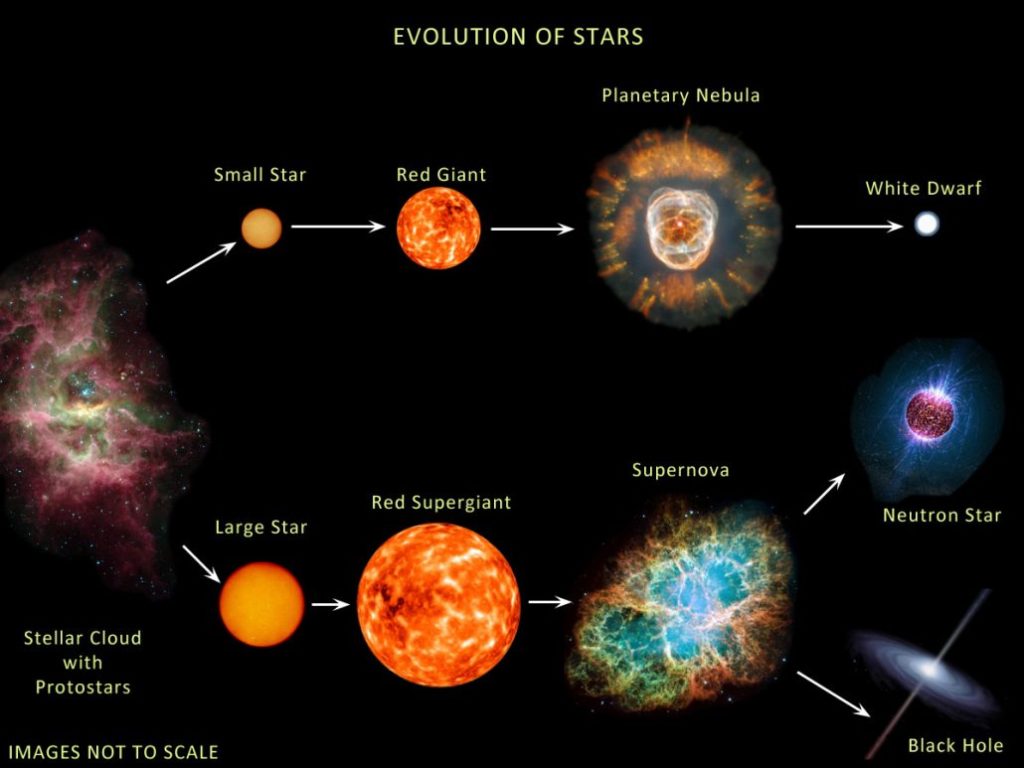
red giant
Having spent millions of years consuming hydrogen through nuclear fusion, all stars larger than 0.08 solar masses (with the exception of red dwarfs) become a red giant. This results from the exhaustion of fuel from the original star, no longer able to support the weight of the outer layers; The core contracts and heats, resulting in an expansion of the outer layers whose surface cools, giving it a reddish color. Thus a red giant is formed and a new equilibrium is temporarily reached.

Red giants are characterized by emitting a strong stellar wind from the core, which makes their mass loss faster (between 40~60%), a phenomenon to which their high metallicity (presence of elements other than hydrogen and helium) also contributes. The main process by which a red giant remains stable is called helium fusion, either Triple Alpha Cycle; Because there are now high concentrations of helium and little hydrogen, a conversion process from carbon to carbon occurs; subsequently a fusion of carbon into oxygen will occur. What happens next will depend on the star's initial mass.
red dwarf
Red dwarfs are an exception to the final stages of a star, since they do not reach the red giant phase. In fact, they do not initiate helium fusion reactions, since these stars are very small (1/3 of the solar mass) and cold, on the order of 2,000~3,500 ºC. They are stars within the main sequence (in the K or M range). They consume hydrogen very slowly and therefore live a long time (billions or trillions of years).
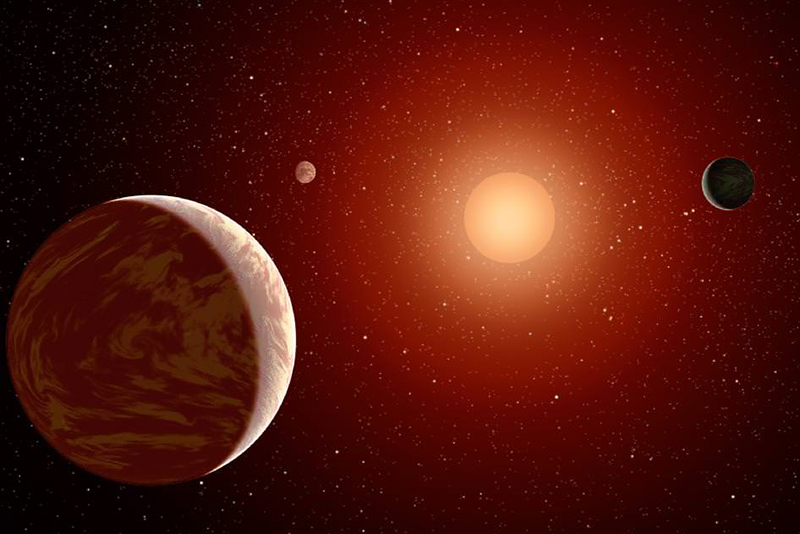
So long is the life of these stars, that the entire time since the Big Bang (estimated at about 13.7 billion years) until now has not been enough for red dwarfs to reach their final stages outside the main sequence. It is thought that they contract and heat slowly until they consume all their hydrogen. Red dwarfs are possibly the most common type of star in the Universe, but given their low luminosity it is difficult to observe them.
planetary nebula
Once the red giant stage ends (without being able to carry out further fusion processes), the star violently expels its outer layers and forms a "planetary nebula"; that is, the remains of the layers expelled by the star, whose core remains in the center of this nebula, but now converted into a small object called White dwarf.
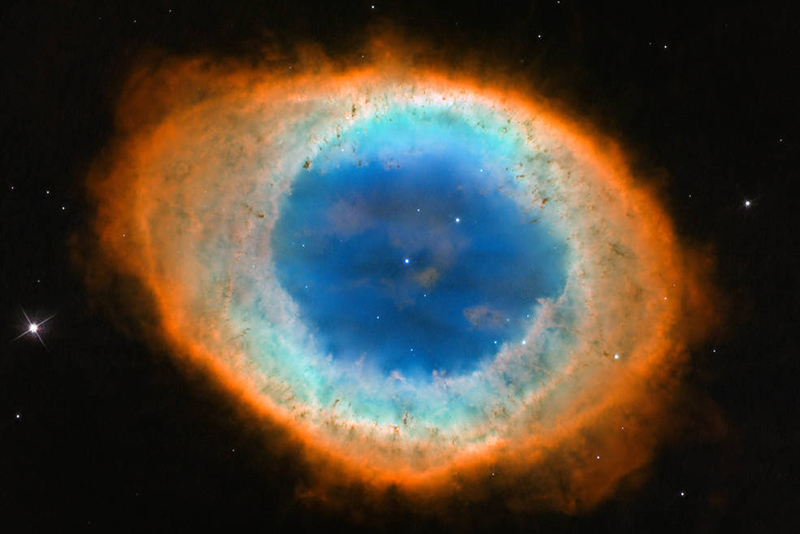
The material that makes up the planetary nebula (named for its spheroidal, planet-like shape) is abundant in hydrogen and heavy elements; The central white dwarf, on the other hand, emits ultraviolet (UV) radiation and when its surface temperature reaches about 30,000 K it manages to ionize the gas in the ejected layers.
This ionization causes electrons to detach and combine with positively charged atoms, causing the gas to become luminous, emitting photons that together make the planetary nebula a beautiful object, of which its peculiar shapes are known. The colors of the planetary nebula will depend on its ionization and chemical composition.
White dwarf
As said, the layers ejected by a red giant form a planetary nebula. And in the center there is a small star (the size of the Earth) called White dwarf. A white dwarf is the result of the contraction of the core in the original star, which has already expelled its layers and where the electrons degenerate and prevent new reactions; This is called repulsion between electrons, a process that supports the white dwarf, preventing it from collapsing.
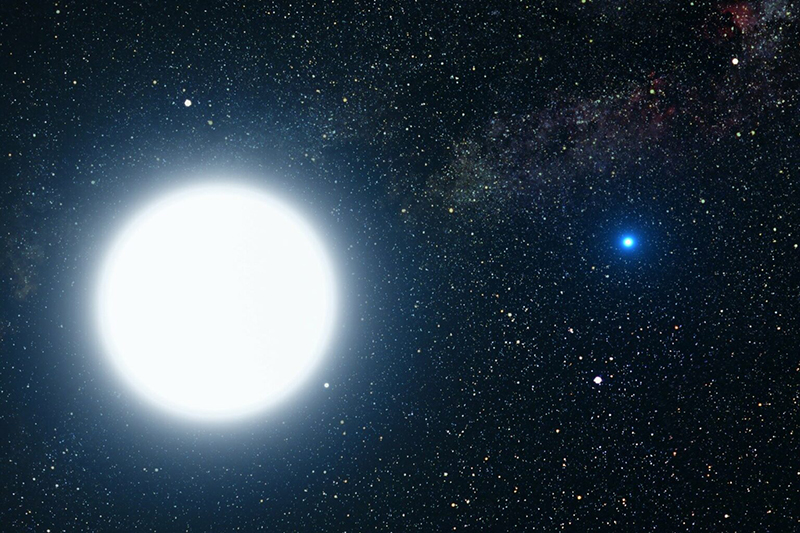
When this complex balance is achieved, the white dwarf is formed, with an initial temperature between 100~200 million degrees Celsius, but it slowly cools.
To make repulsion between electrons possible, a density of ~10E6 g/cm3; for this reason these stars are very dense (if we took out a "spoonful" it would weigh millions of tons); it is also required that the stellar mass does not exceed Chandrasekhar limit, equivalent to 1.44 solar masses (above, it would become a neutron star or a black hole). The cooling of white dwarfs continues for several million years until they approach the Absolute zero (-273ºC).
Nova (in some cases)
A nova is a phenomenon associated with certain white dwarfs, which form a binary system with another star, of the red giant or supergiant type; because the latter is expanding its outer layers, it has less gravitational power over them, so the white dwarf "tears off" part of its gaseous material (hydrogen), which begins to accumulate around the white dwarf and forms an accretion disk around it.
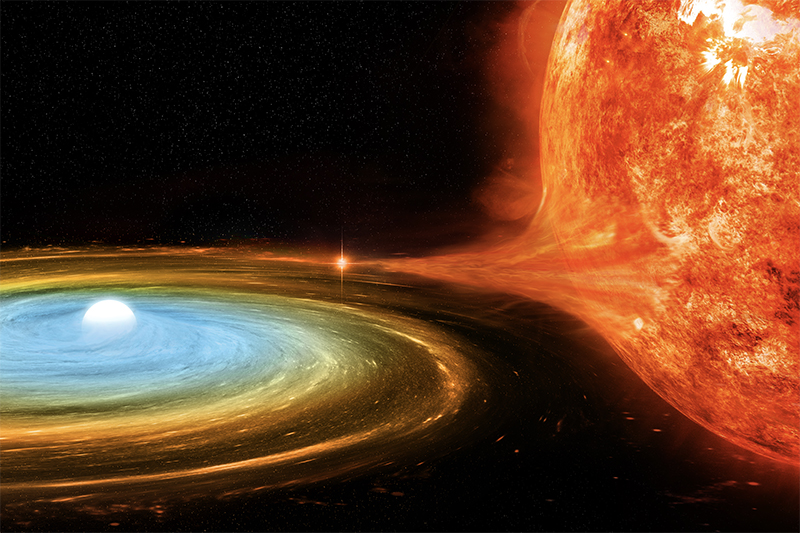
After a long time has passed, the white dwarf with material around it reaches the point of starting hydrogen combustion, producing a thermonuclear explosion on the surface of the dwarf, which is quite bright but does not destroy the central star, but instead produces a short-lived luminous flash (a few days), which, seen from Earth, appears as if a new star has emerged in the sky.
That's where the name "not going", which means "new" in Latin. After that, the white dwarf can continue to consume material from its giant neighbor and repeat the cycle; this can continue to occur until the white dwarf finishes extracting its material from the red giant, or the nova could generate enough energy to destroy the entire system.
red supergiant
A supergiant occurs when the mass of the initial star is greater than ~8 solar masses. It should be noted that not all stars called "giants" and "supergiants" necessarily correspond to stars in their last stages of life. There are also young blue supergiants (spectral type O), while red supergiants (and red giants) are highly evolved stars (spectral type M).
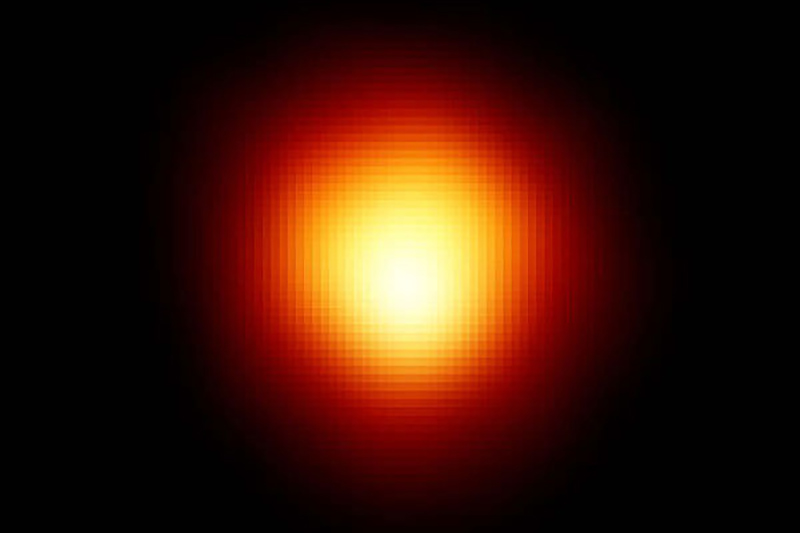
Red supergiants can be more than 100 or 1,000 times larger than our Sun, and are the next step of a red giant, where this time other fusion phases are generated, further expanding the star to enormous dimensions.
The phases that follow are: fusion of carbon into neon, fusion of neon into oxygen, fusion of oxygen into silicon, and finally, fusion of silicon into iron. In this last phase, the nuclear statistical balance, where the iron can no longer fuse and the star can no longer sustain itself, ending up collapsing.
Supernova
A supernova is a violent explosion of a supermassive star at the end of its life. After the star has gone through all the previous stages (red giant and/or red supergiant) and is unable to undergo further fusion, it collapses, contracts and then, in a fraction of a second, violently explodes its outer layers and causes an enormous explosion. luminosity (as bright as the galaxy where it resides), and then decreases in brightness.
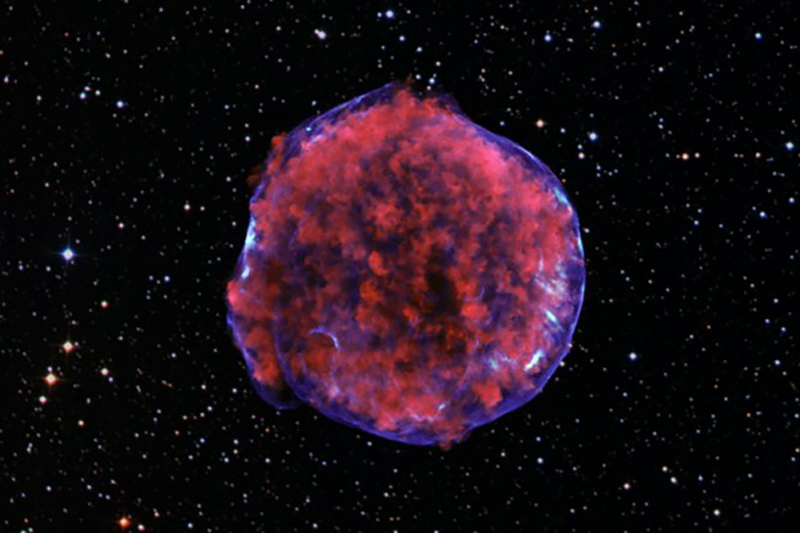
It is one of the most violent phenomena in the Universe, whose luminosity can last for days or even months; a supernova expels dust, gas and many heavy elements into space, i.e. metals, which are ultimately the raw material for the formation of planets and solid bodies (that is why we say that everything around us is "metals").star dust"(by-products of a supernova). Supernovae are divided into types I and II, depending on whether they lack or possess hydrogen spectral lines.
neutron dwarf
A neutron dwarf is the collapsed core of a massive supergiant star, which has then exploded as a supernova. One condition is that the original star must have had between 9~30 solar masses. These stars are even denser than white dwarfs, and smaller. They are maintained by a process of "neutron degeneracy" or "neutron repulsion", requiring a density of 109 g/cm3.
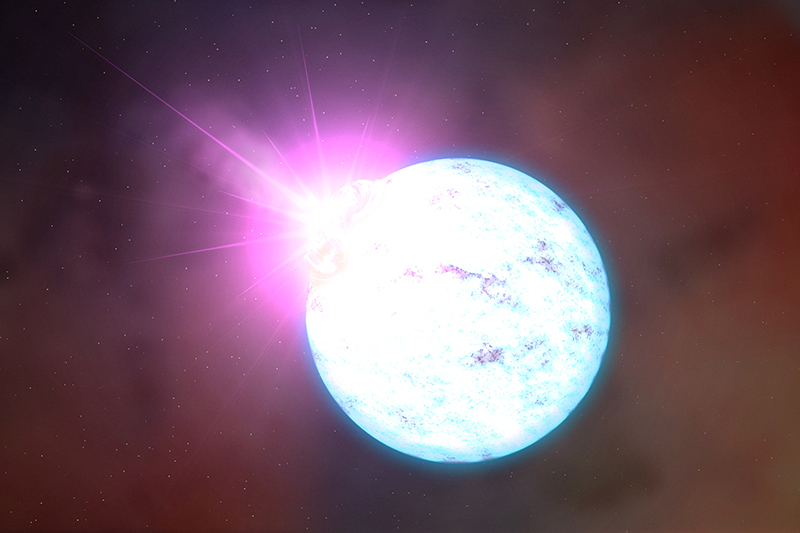
Neutron dwarfs have a size of around 20 km in diameter, with a strong gravitational field (2×1011 times larger than that of Earth). Neutron stars are in a limiting state, barely "saved" from becoming a black hole, another possible fate after a supernova. The most characteristic members of neutron stars are pulsars.
Pulsar (subcategory)
A pulsar is a neutron star characterized by emitting a constant, pulsating radiation at regular intervals. This occurs because the star has a strong magnetic field, which, combined with the star's rapid rotation, gives it a "dynamo" effect. Thus, two beams of radiation are produced from each magnetic pole of the star, which periodically "sweep" space, just like a lighthouse would.
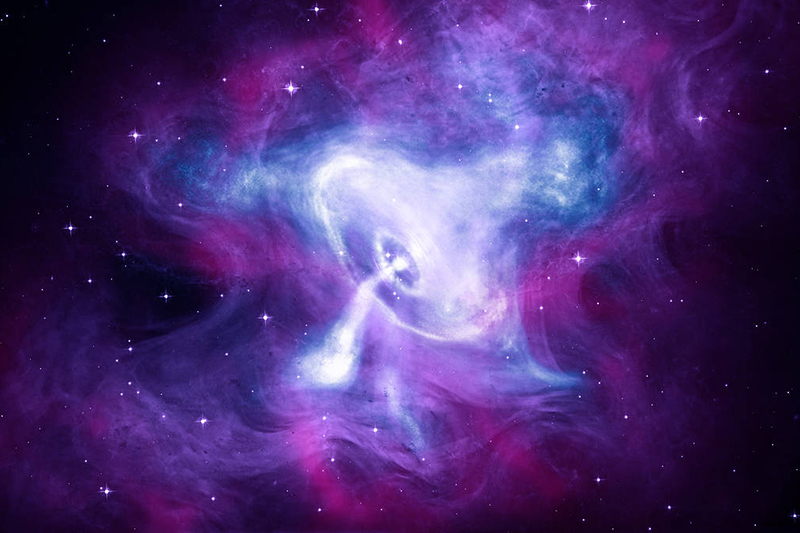
The particles emitted by a pulsar can be radio waves, optical waves, UV rays, X-rays and gamma rays. Pulsars rotate on themselves several times per second and very precisely, something that can be detected.
Pulsars are known to rotate somewhat slower as they age. All pulsars must be considered neutron stars, but not all neutron stars are pulsars; a number of complex conditions must be met for a neutron star to behave as a pulsar, one of which is that the star has access to accretable matter, such as supernova remnants, to trigger reactions that accelerate its rotation and turn it into a pulsar. The word "pulsar" comes from the English pulsating star (pulsating star).
black hole
A black hole is a singularity, that is, a point where conventional physical laws stop working, due to the great curvature of space-time, with an enormous amount of matter concentrated in a single point. Thus, a black hole is a concentration of mass with practically zero volume, but with enormous density and gravitational force that make it popular for "swallowing" everything that is nearby, where not even light escapes its attraction.
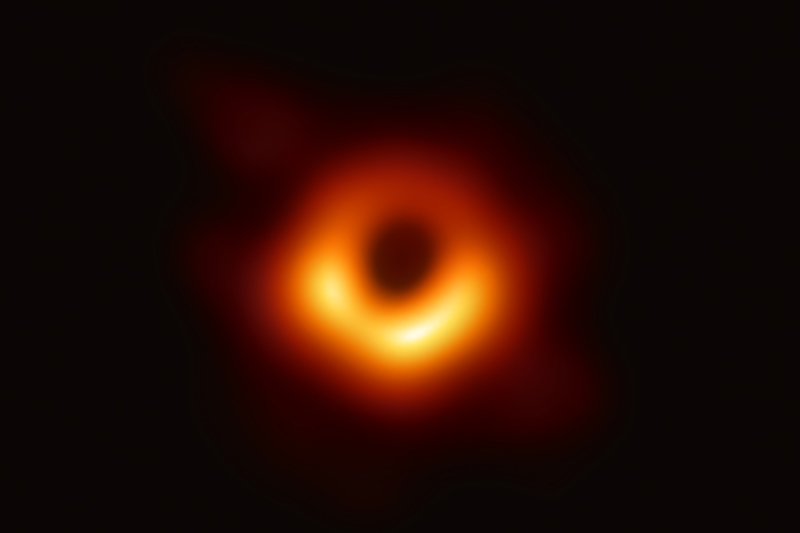
A black hole is a possible scenario after the collapse of a massive star. It is estimated that the maximum mass that a neutron star can have, without becoming a black hole, is between 1.5~3 solar masses.
A black hole has a "zone of attraction" called event horizon, the point beyond which matter can no longer escape. Quantum mechanics is used to explain the radiation that manages to escape from a black hole. Here, the work of physicist Stephen Hawking stands out, when he stated his theory that the gravitational field of a black hole manages to spontaneously create a particle and an antiparticle, where the particle falls into the hole, but the antiparticle manages to escape and in this process it annihilates with another particle, transforming into pure radiation. This concept is known as "Hawking radiation".

